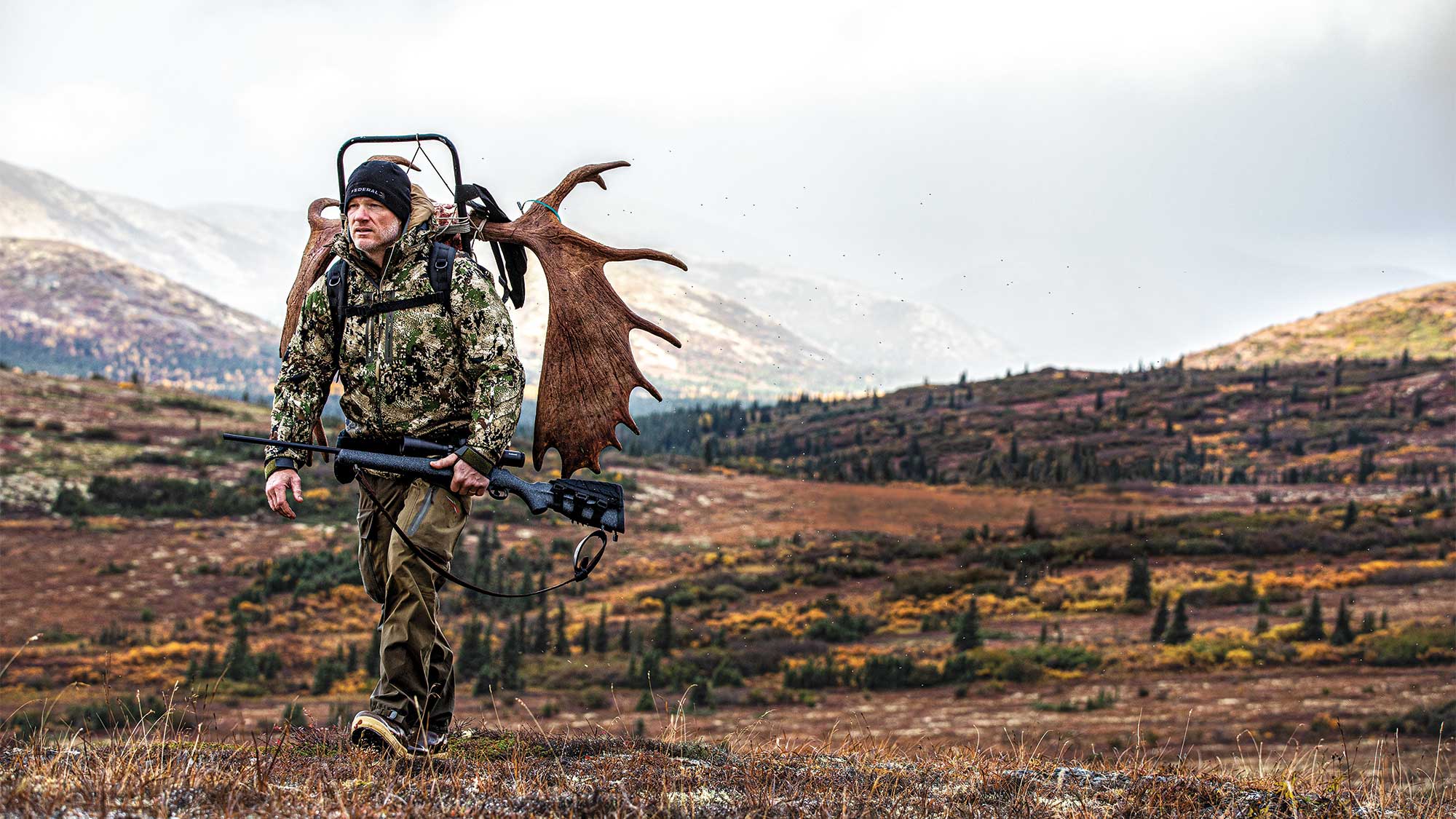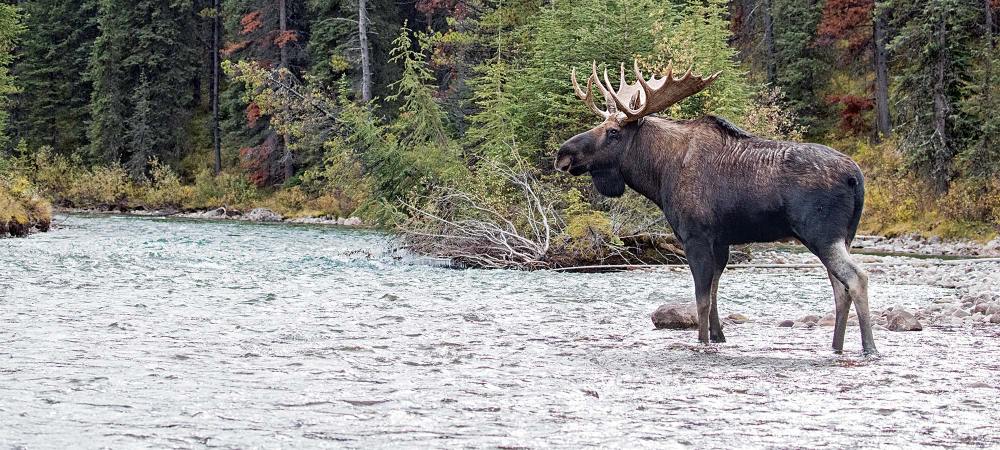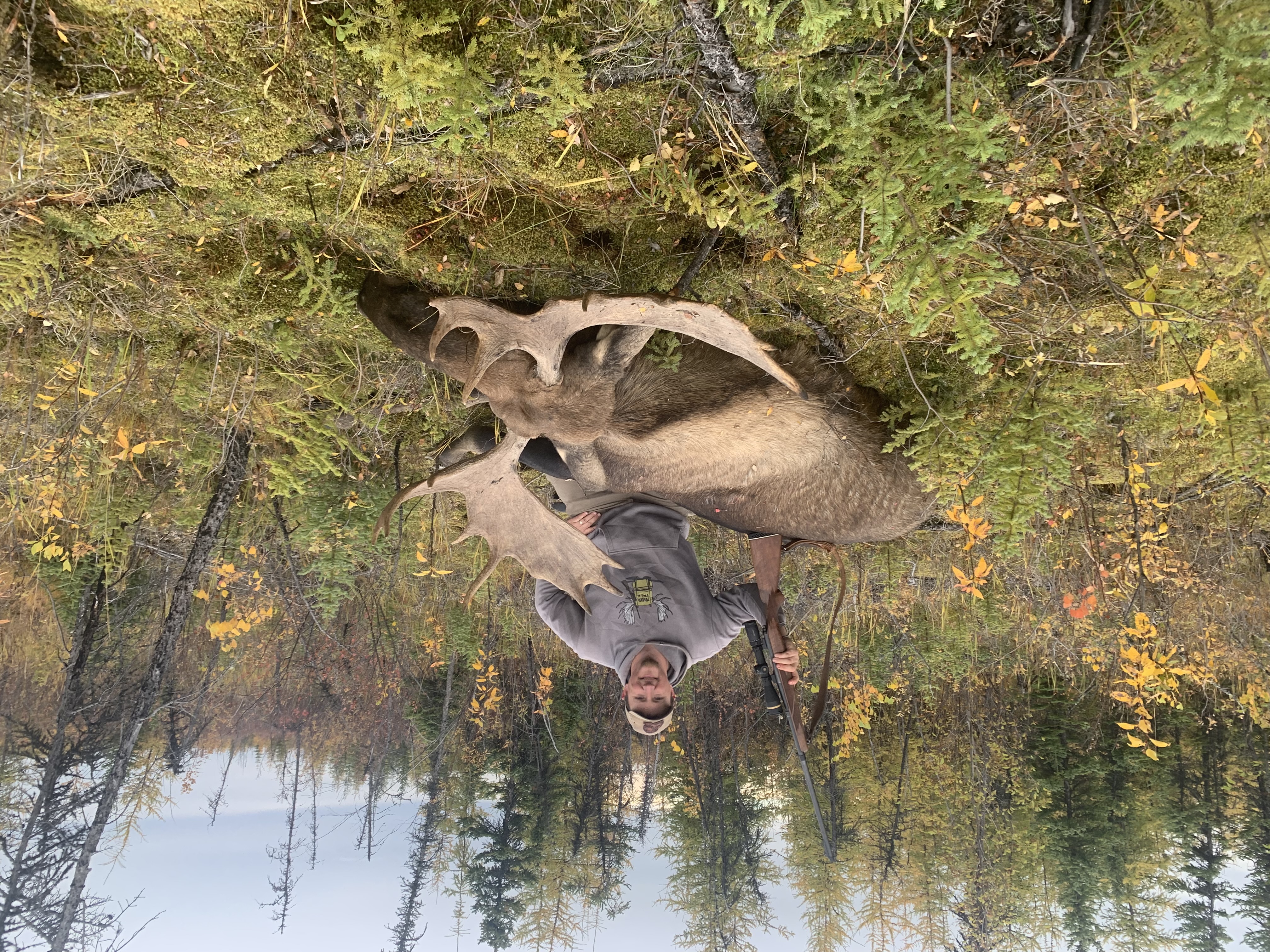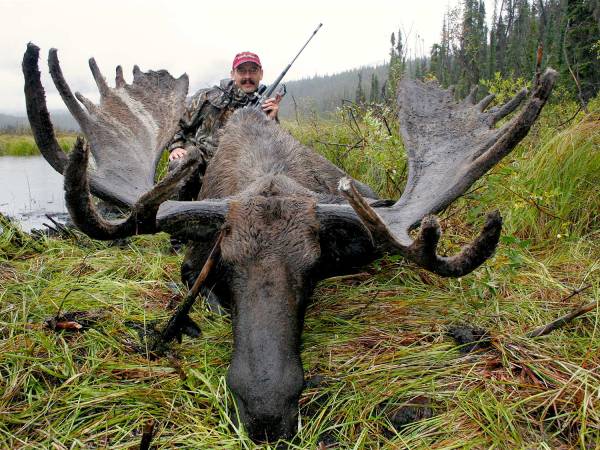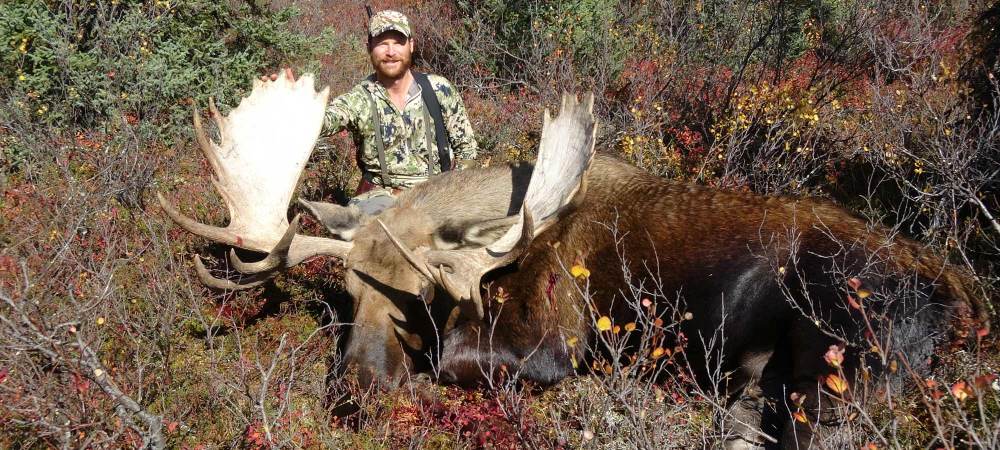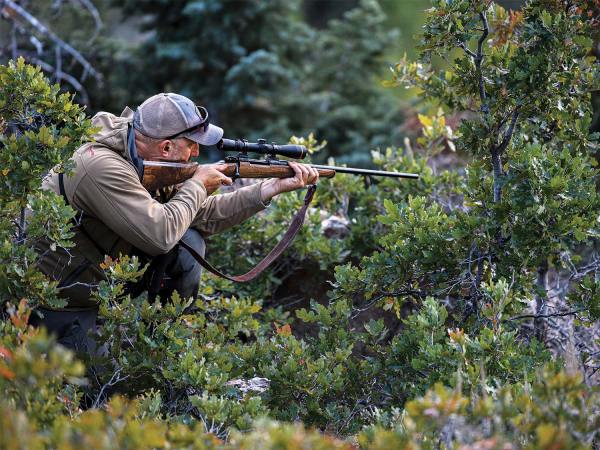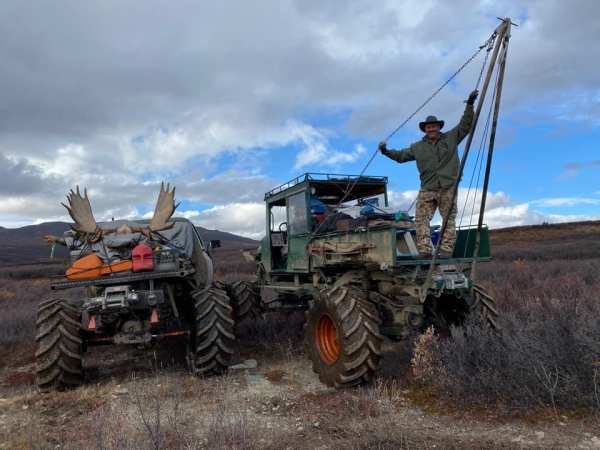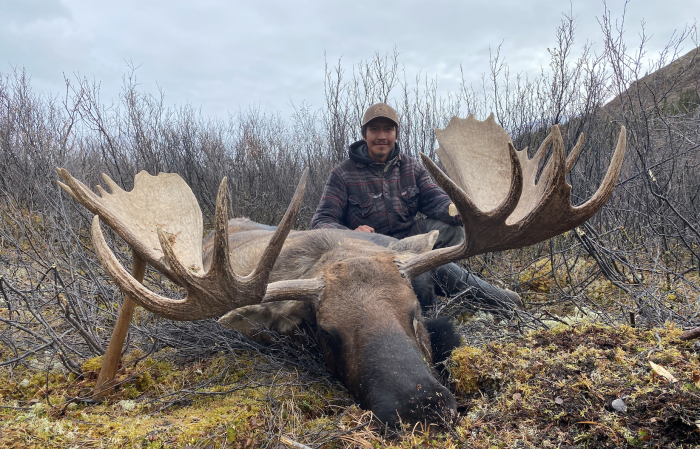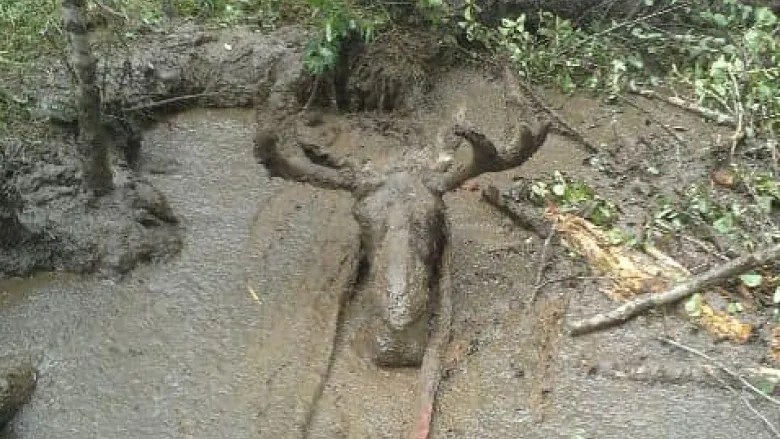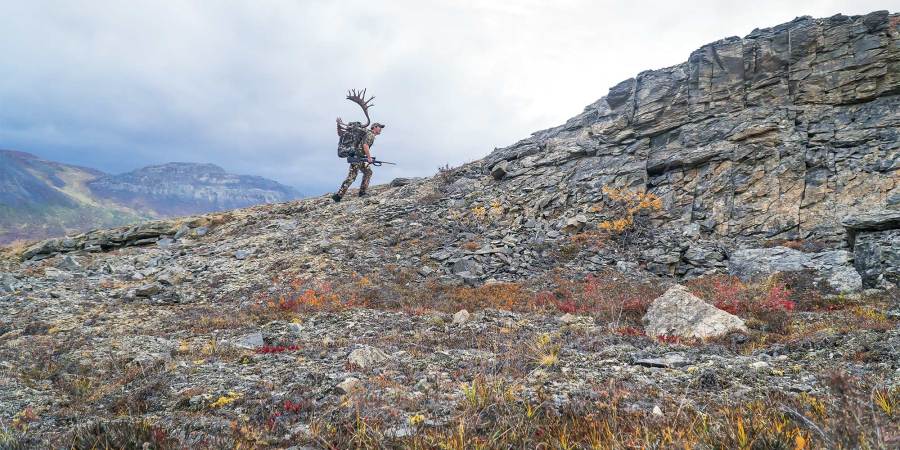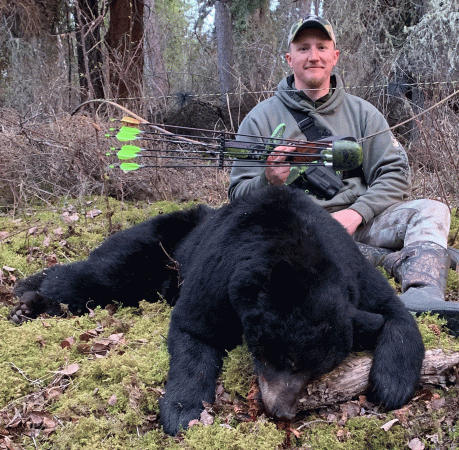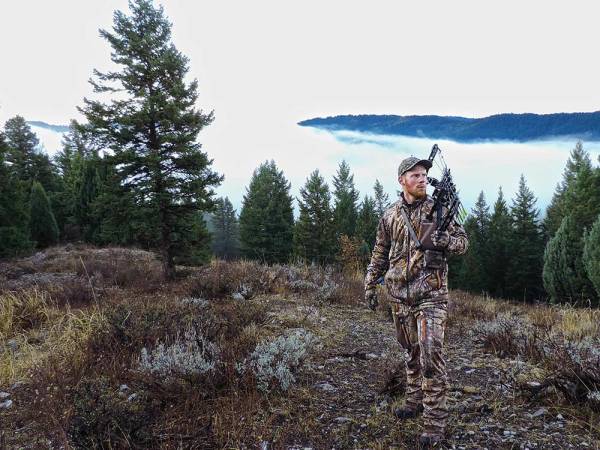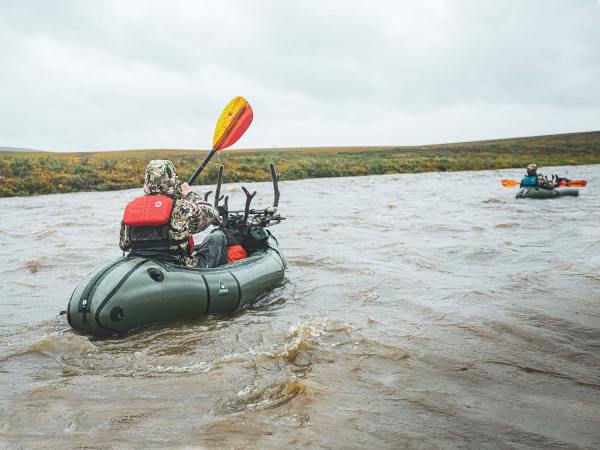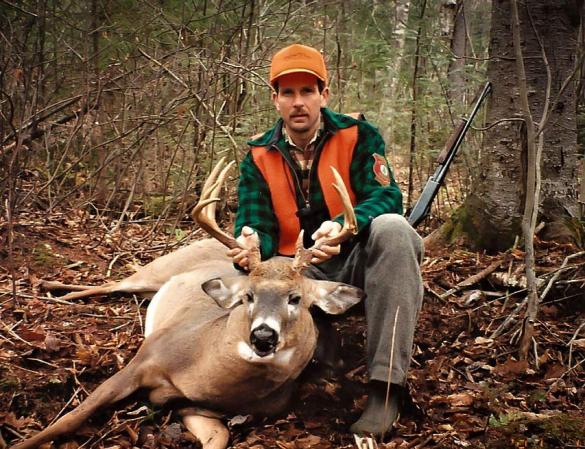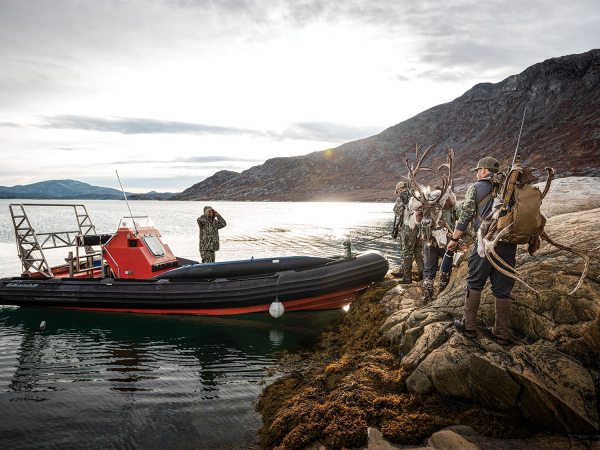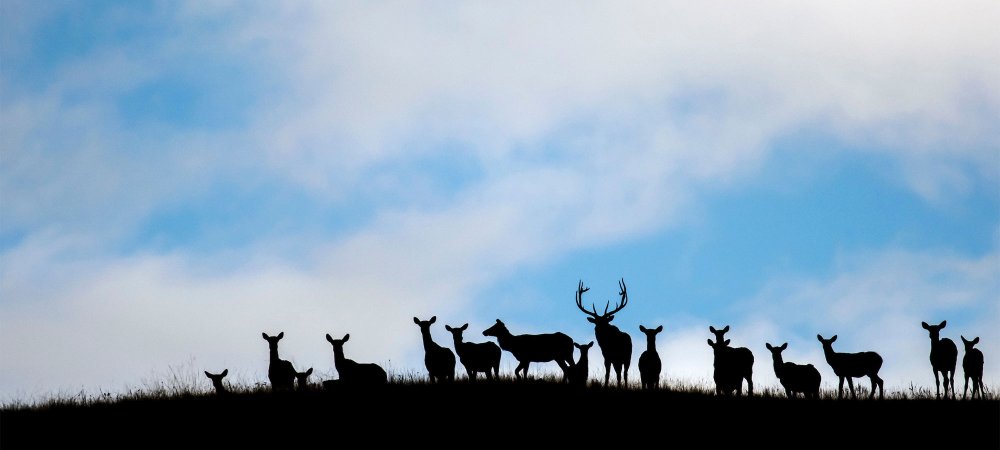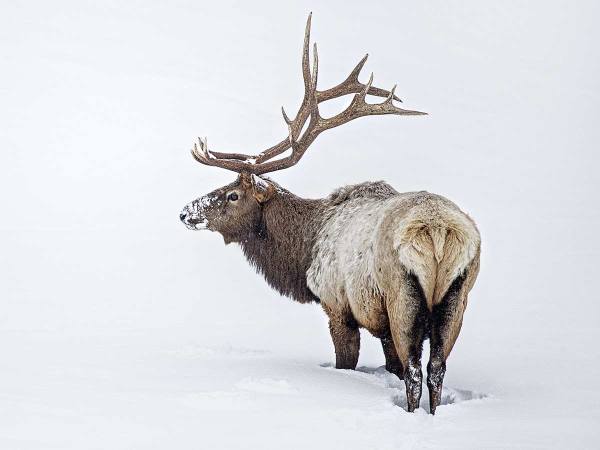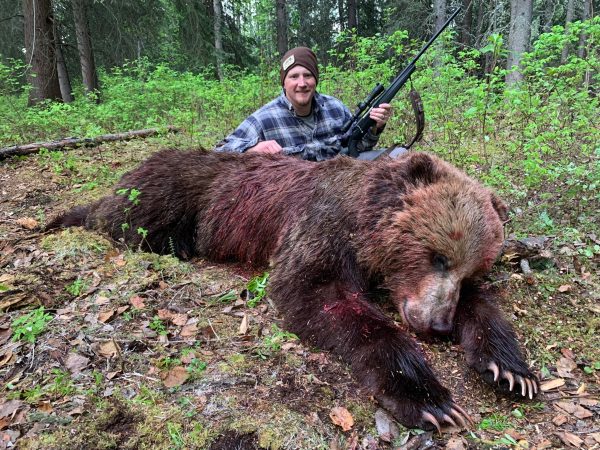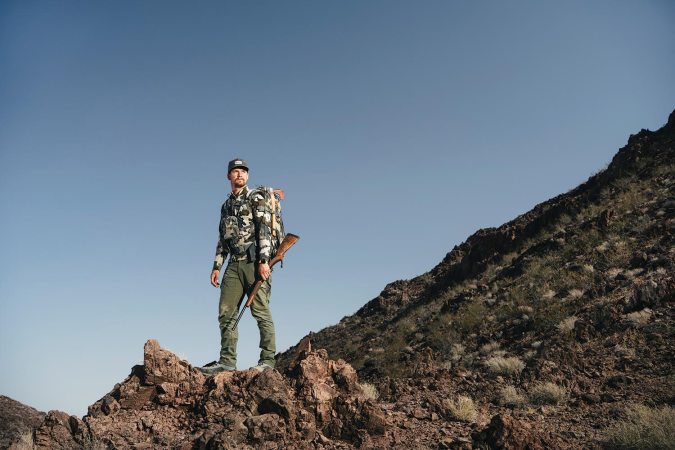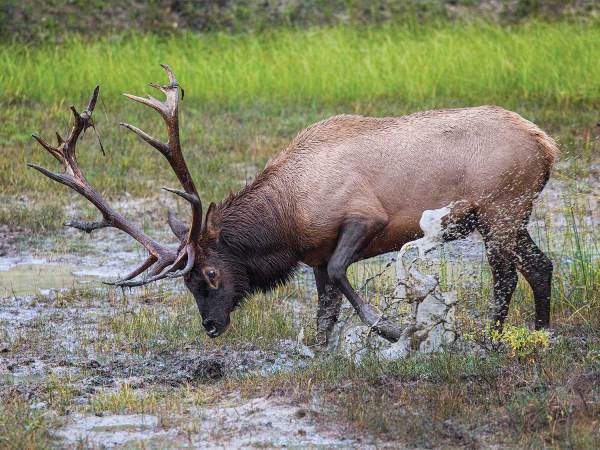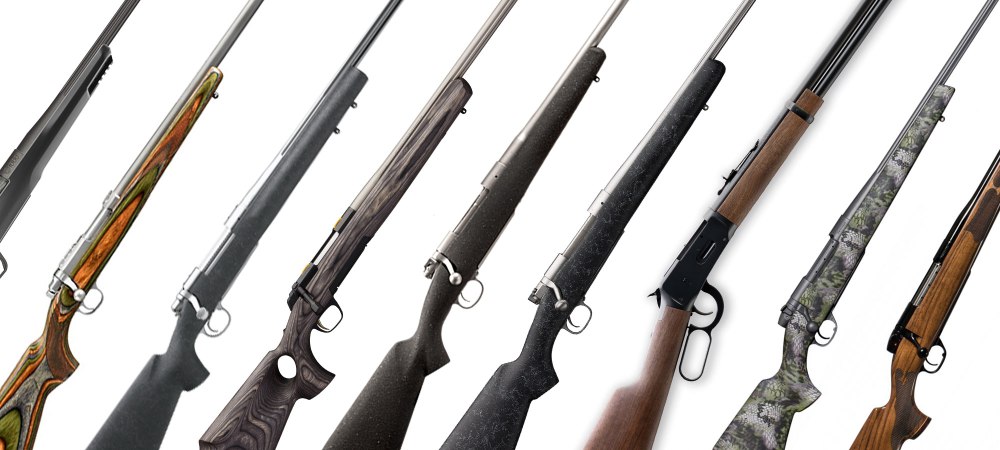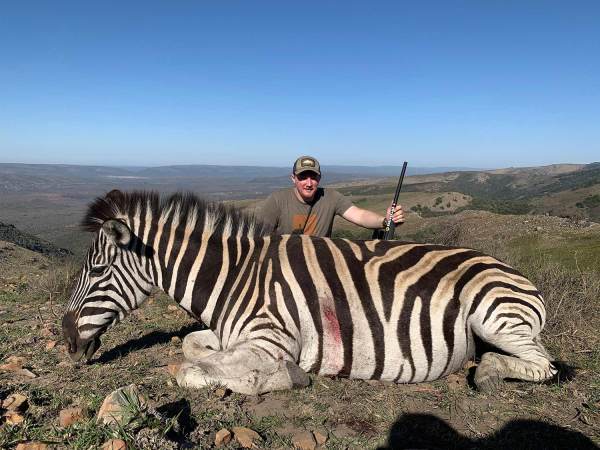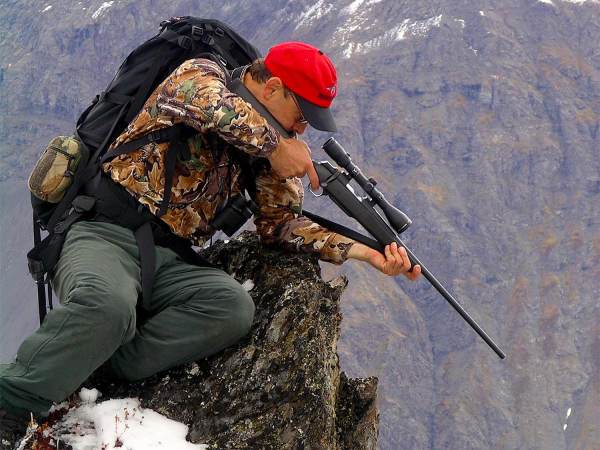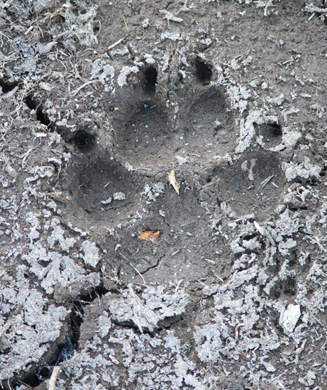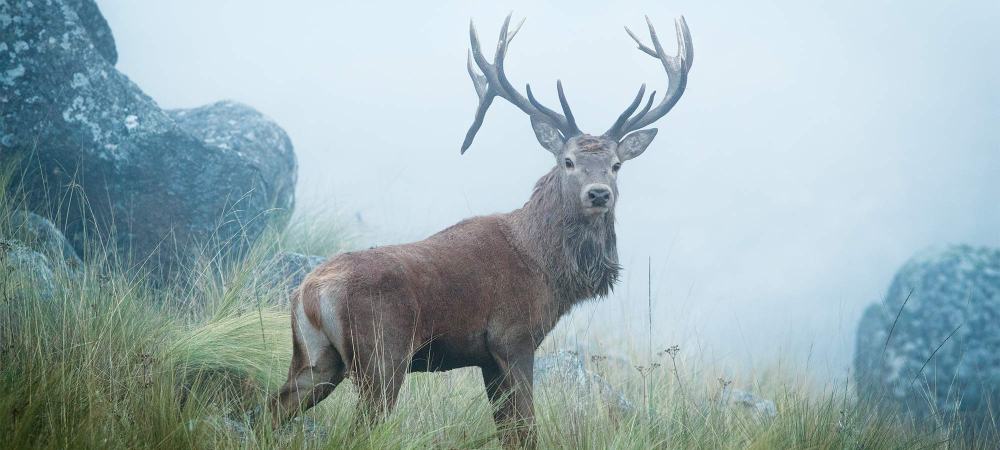As we loaded our gear into the bush planes, Bruce Werba offered one last piece of advice. “Be sure to use all 44 stakes. It’ll get windy up there—I guarantee it.”
I’d spent enough time in the Alaskan backcountry over the years that he wasn’t going to get an argument from me.
Our squadron consisted of three Super Cubs with tundra tires. I folded myself into the cramped space behind the pilot where the rest of my gear was stored, my shoulders touching both sides of the fuselage. We lifted off the gravel runway that’s the primary connection between the 160 souls who call Holy Cross, Alaska, home and the rest of the world, and banked over the wide and muddy Yukon River before my pilot, Matt, put us on a westerly bearing.
We were in the air for nearly an hour, heading into the Yukon Delta National Wildlife Refuge, a massive region that borders the Bering Sea and is bigger than the state of Maine. I took mental note of the terrain we flew over, a mix of pine-covered mountains, tundra, vast patches of willows, and countless bogs, ponds, and rivers. It occurred to me that if, for whatever reason, we had to trek out on foot, we’d probably never make it back.
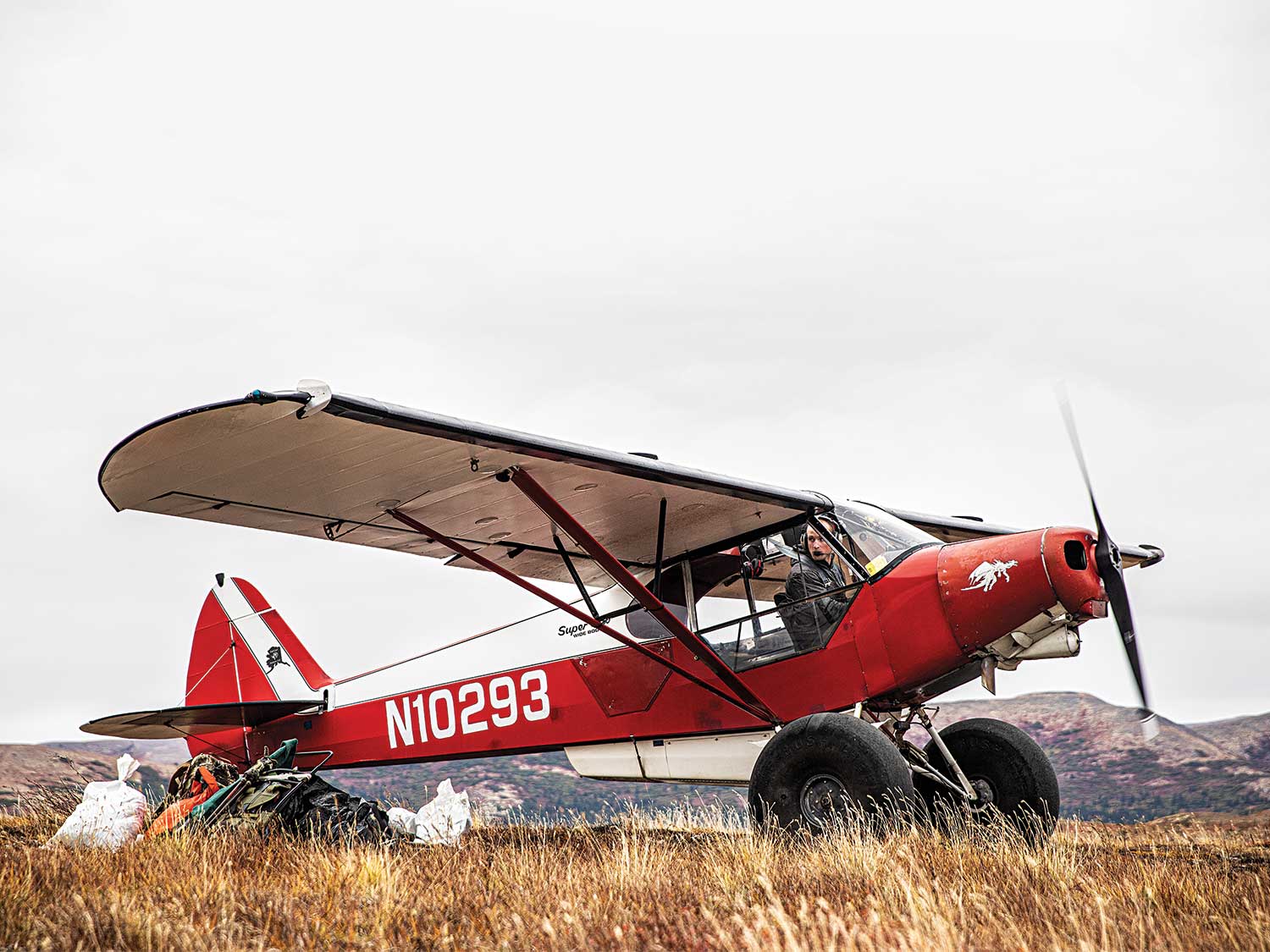
Over the roar of the engine, Matt shouted that we were approaching our landing zone. He made a large circle over an exposed flat that was surrounded by mountains on three sides to make sure he could put us down safely.
He pointed the nose of the plane into the stiff easterly wind for the final approach, and we bounced to a standstill in a matter of feet. He jumped out of the cockpit and signaled by hand to the other pilots to help them land.
As soon as the three planes were down, the pilots quickly pitched our gear onto the tundra and just as quickly took off. “Good luck,” Matt said before firing up his engine. Time is money for these guys, and they weren’t wasting any of it.
The three of us looked around at the place that would be home for the next 12 days. I was with my longtime friend Jason Nash, who works at Federal Ammunition, and photographer Tom Fowlks. This was Jason’s first moose hunt, and we had decided to do it on our own terms: getting dropped off in the wilderness during the rut and calling bulls.
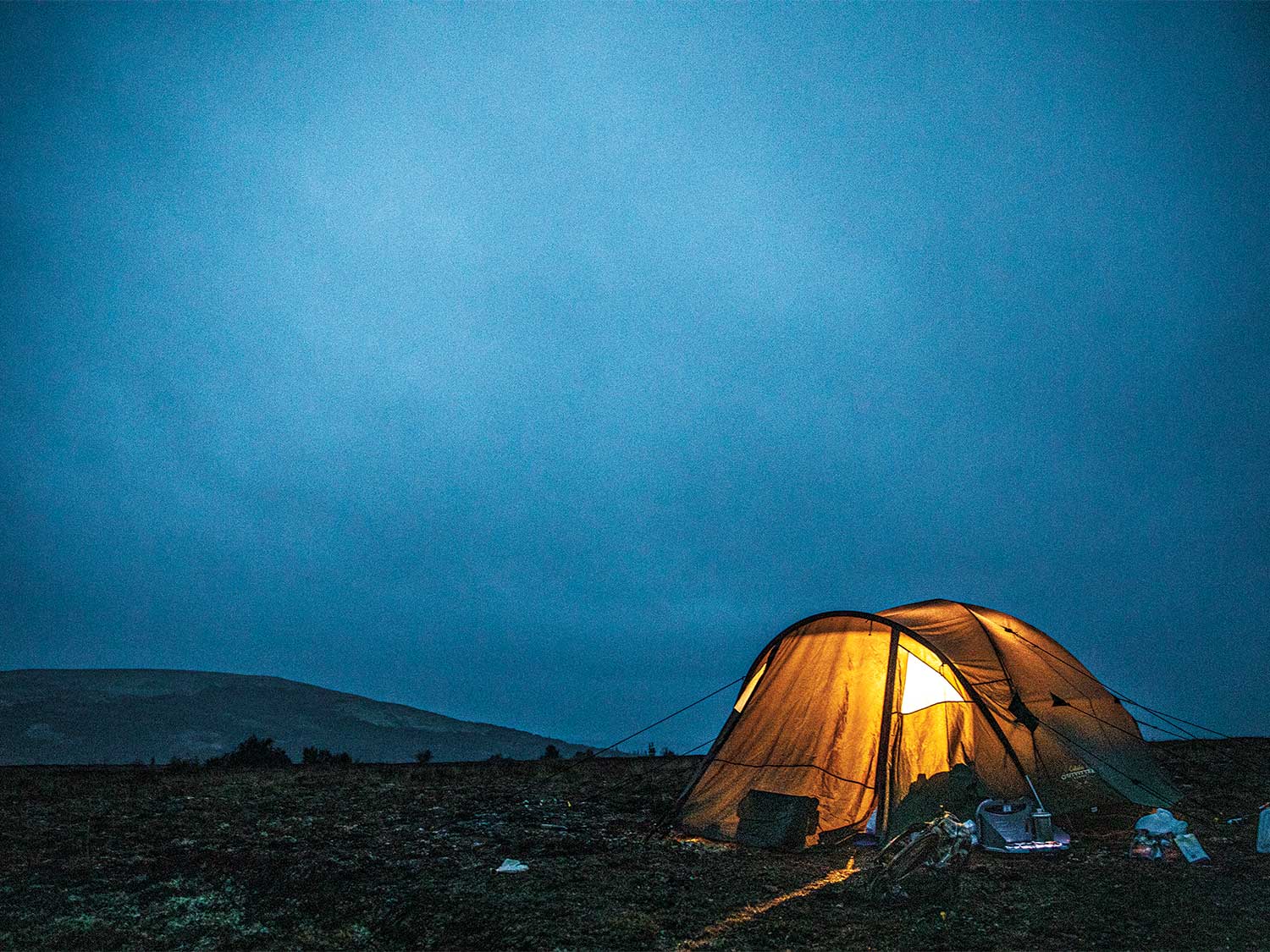
We had to manhandle our tent, which was bucking in the strong wind, to get it set up. The forecast said the prevailing winds for the next 10 days would be out of the south, so we oriented the entrance toward the north and, with Werba’s admonition in mind, pounded all 44 stakes deep into the rocky soil with large stones.
Werba, who runs Alaska Pike Safaris with his wife, Connie, is a bit of a legend in Alaskan outfitting circles. He has the friendly demeanor of everyone’s favorite grandpa (he’s in his 70s), but is almost inhumanly tough. That spring, a few months before our trip, he’d had a heart attack while guiding pike fishermen and wasn’t able to get to a doctor in Anchorage until four days later—yet he was back on the job in a matter of days, doing work that would grind down a man half his age. His reputation for putting both his guided and self-guided hunters on big bulls is why I sought him out. I’ve been on half a dozen moose hunts over the years and have killed three, but I’d never had a chance on a true monster—one of those gaggers in the mid-60s that just takes your breath away—until now.
While Jason and Tom set up the cots in the tent, I dug a pit and lined it with a tarp that I weighted down with rocks to collect drinking water from the rains that were sure to come. Once the camp was set, we fired up the stove, heated water, and ate freeze-dried spaghetti and beef stroganoff straight from the bag. We had some bourbon to celebrate the start of the adventure, half a bottle disappearing with alarming speed. We’d only purchased two bottles back in Anchorage, a nod to modesty that the three of us instantly regretted. For the rest of the trip, we invoked emergency rationing.
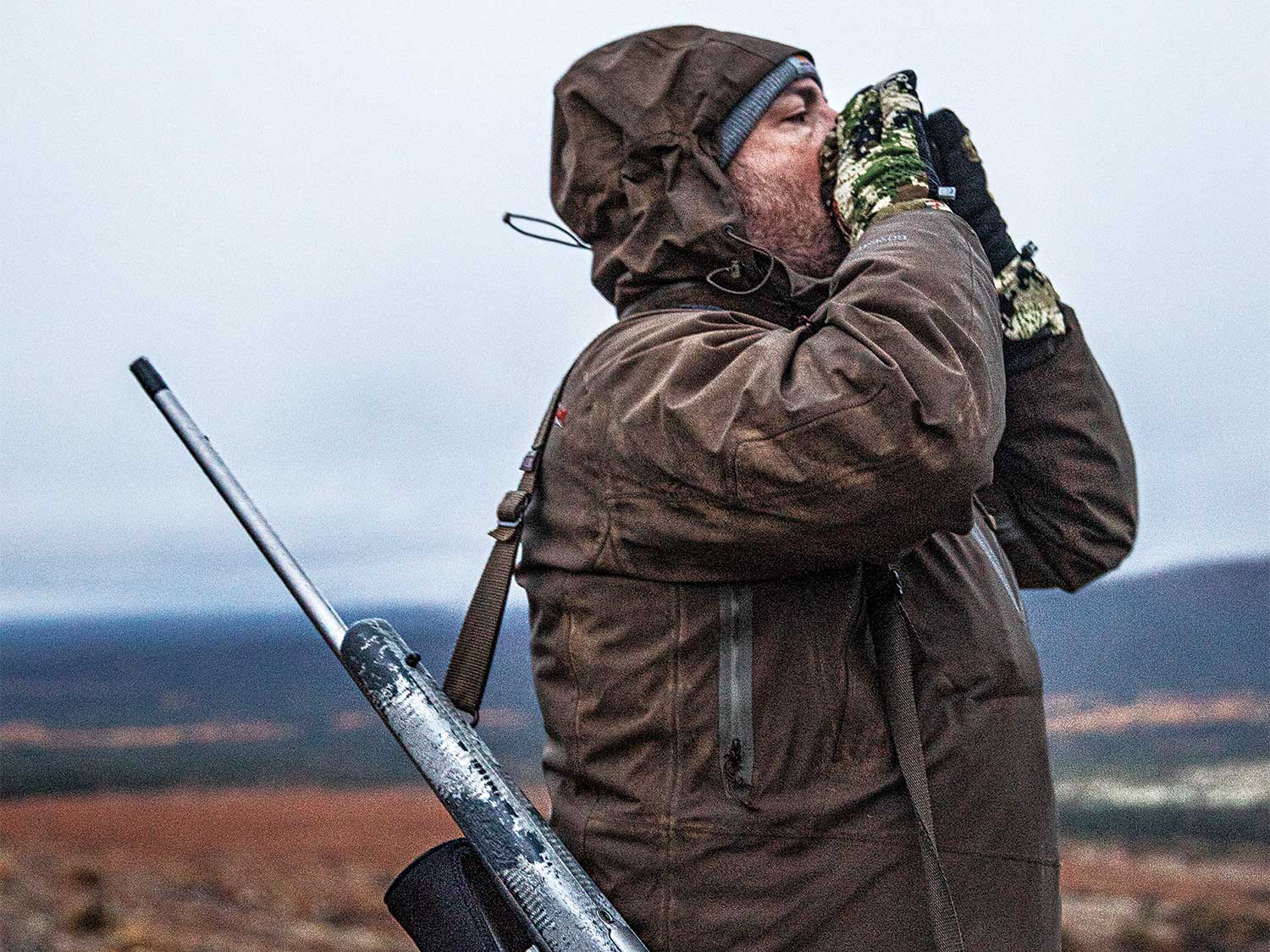
It rained heavily that first night, and the wind beat on our tent, making the rainfly snap and pop like a flag in a gale. The next morning, I fiddled with the guide lines until I got the rigging right, and the tent quieted down.
After downing mugs of instant coffee, we explored our outpost. The broad flat was covered in tundra with patches of gravel and a few small stands of pine and willow. Everywhere I looked I could see bushes laden with ripe blueberries, and dark crowberries carpeted the ground.
Both ends of the flat, which was about three-quarters of a mile long, gave commanding vistas of the country. The north end overlooked a long, broad valley rimmed by mountains that descended to a river about a mile away. To the south, we had views of more mountains and the upper reaches of a pine-forested draw that dropped steeply down to god knows where. I hoped that if a good bull were down there, I could coax it out of the timber—because there was no way on Earth I’d chase one into that hellhole.
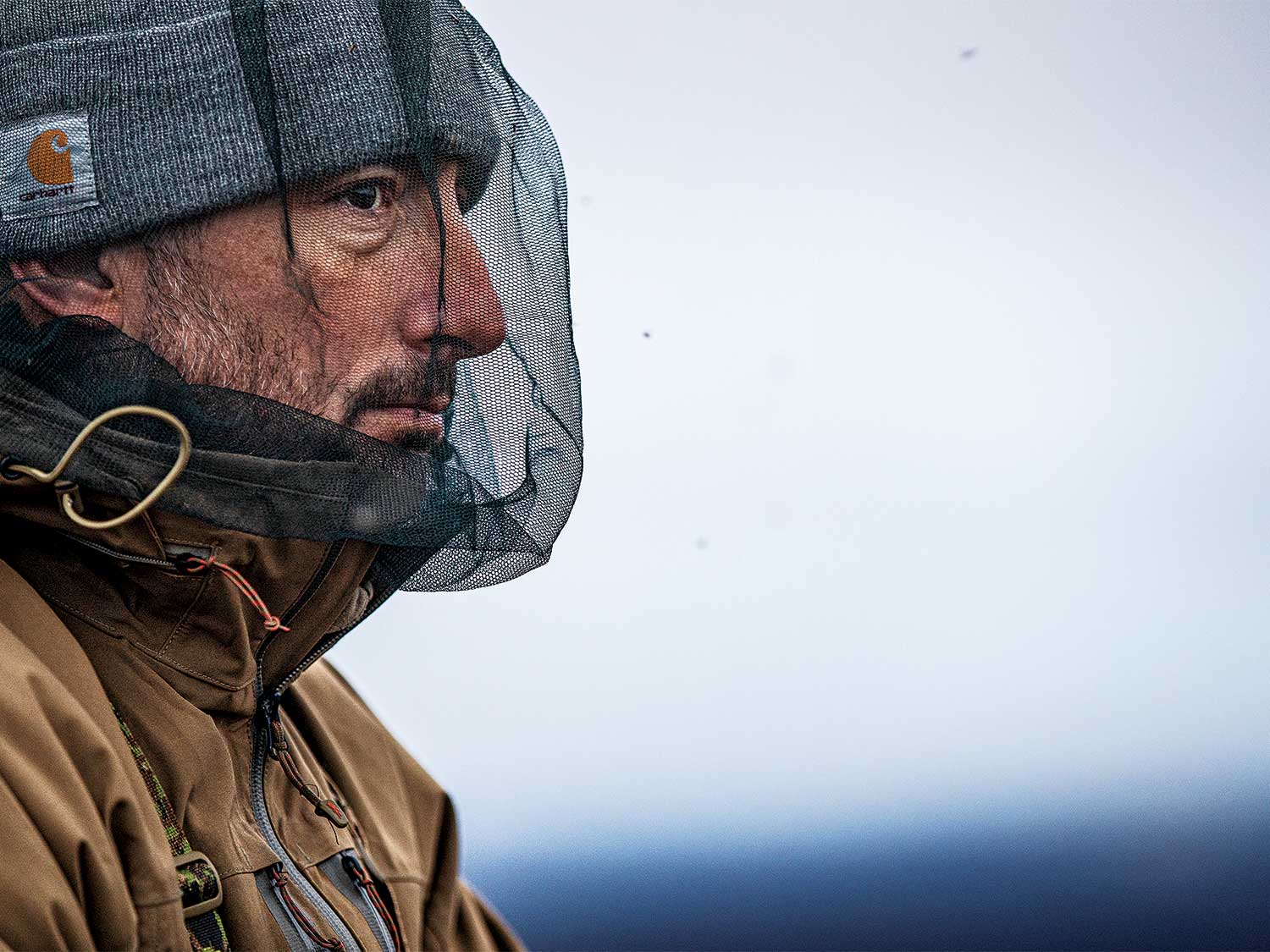
The Visitor
A large grizzly came through our camp at lunch. We were back at the tent, comparing notes and eating sandwiches, when he appeared. He angled slowly toward our tent, head down, eating berries. He was a big brute: small ears, broad across his shoulders and rump, sagging belly. I couldn’t tell what his hide would have squared—I’m not particularly good at that—but he was a toad. If I were chasing grizzlies, he’s exactly the kind of bear I’d be looking for.
As it was, the three of us just watched him strut our way. The wind was at his back, and he hadn’t noticed the interlopers on his turf. He dropped down and rolled on his back like an enormous dog, trying to deal with the swarm of bugs around him. We stood there, Jason and I, with rounds chambered in our .30/06s, as he cruised past us at 75 yards. Later that afternoon, while glassing for bulls, I saw him through the spotter about 2 miles away on a mountain, still going.
Our hunting technique wasn’t complicated. We had two cow moose decoys and a makeshift moose paddle that consisted of a white mesh game bag I had stretched over a wire hanger. Because the wind rarely let up, we put one decoy in a small willow-choked gap on the edge of the northern lookout, where any bull to the north or west of us would see it.
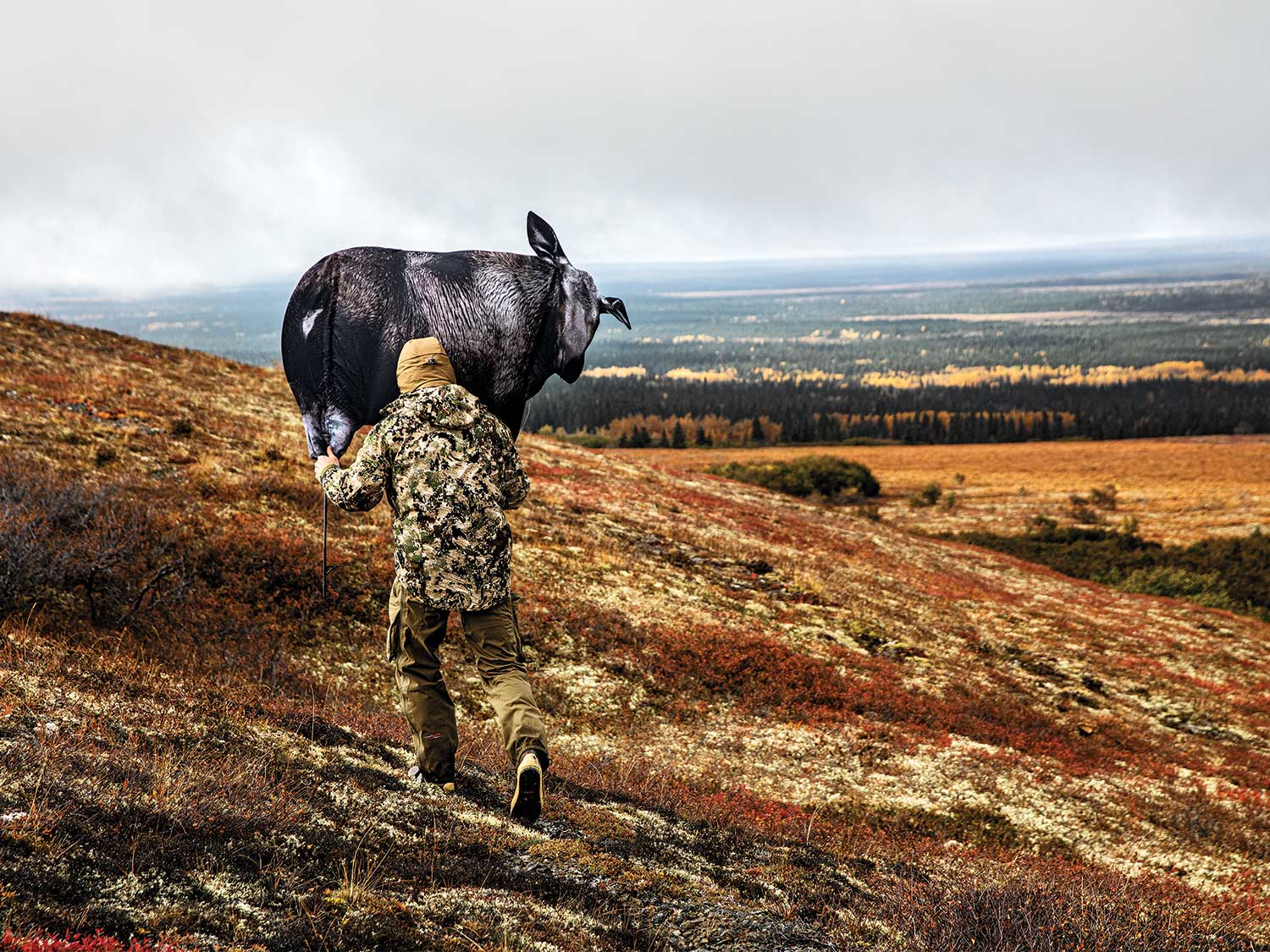
From a spot above and behind the decoy, we’d glass while calling every 10 minutes or so. Cupping my hands over my mouth, I’d wail like a lonely estrous moose, emptying my lungs for all they were worth. Sometimes I’d mix in bull calls, a deep, guttural mwah that to me always sounds like an old man grieving some terrible loss.
The wind picked up, and fog and rain rolled in, which cut our visibility to a couple hundred yards but provided relief from the swarms of tiny black flies that pounced whenever the breeze died. We had Thermacells to help with the mosquitos, but they didn’t dissuade those psychotic little bloodsuckers. Only our full-face bug nets and a liberal dousing with pure DEET kept them at bay.
On the fourth day, I spotted my first moose. I was trudging across the tundra, working toward the south end of the flat to glass, when I saw the cow in a small patch of willows. She’d spotted me too, and even though 700 yards separated us, that was too close for her, so she turned around and loped over the hill and out of view. Watching moose cover ground is an impressive sight. Standing still, they are awkward-looking creatures, but nothing moves through rough terrain the way they can, like skaters on ice. They can run through timber blowdowns that would stop any two-legged hunter in their tracks.
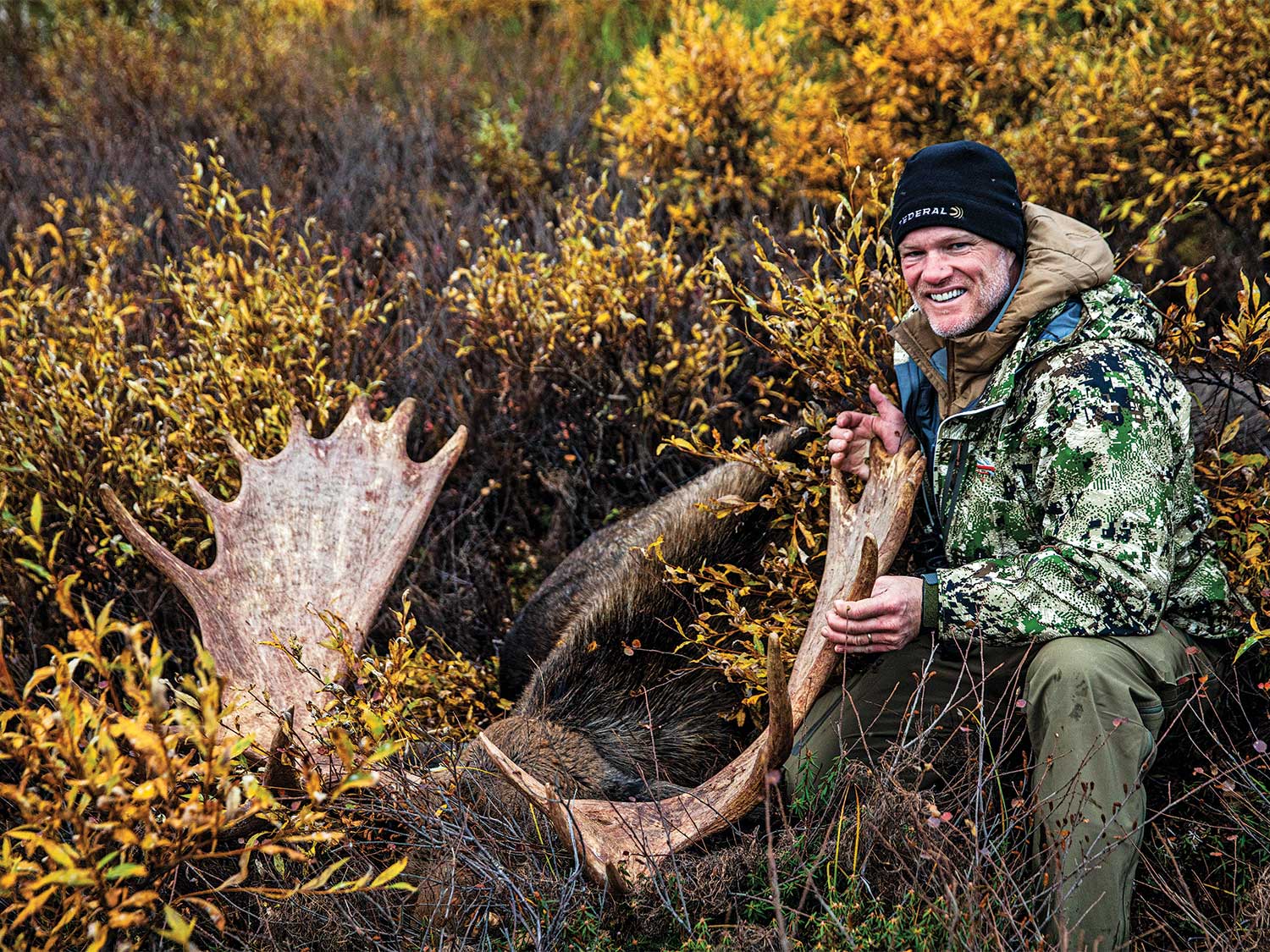
I posted up on an exposed knob that was flanked by several large willows, giving me some cover from which to glass the area. At one point, I watched a nervous-looking black bear work back and forth across the hillside that dropped into the hellhole. He was eating berries in the same patch I’d walked through a couple of days before. Between mouthfuls, he’d pop up on his hind legs and look around before grabbing some more. After 20 minutes, he saw or smelled something he didn’t like and beelined into the depths of the dark timber.
By the end of the day, I was tired and scanning on autopilot. So when I swung my binocular to the right and got a full-frame view of a grizzly walking toward me, the adrenaline surge felt like a physical blow.
Once my lungs and heart started to work in concert again, I took another look. Like the grizzly that had strolled through our camp, he was a big bear, walking with the assured saunter of an apex predator.
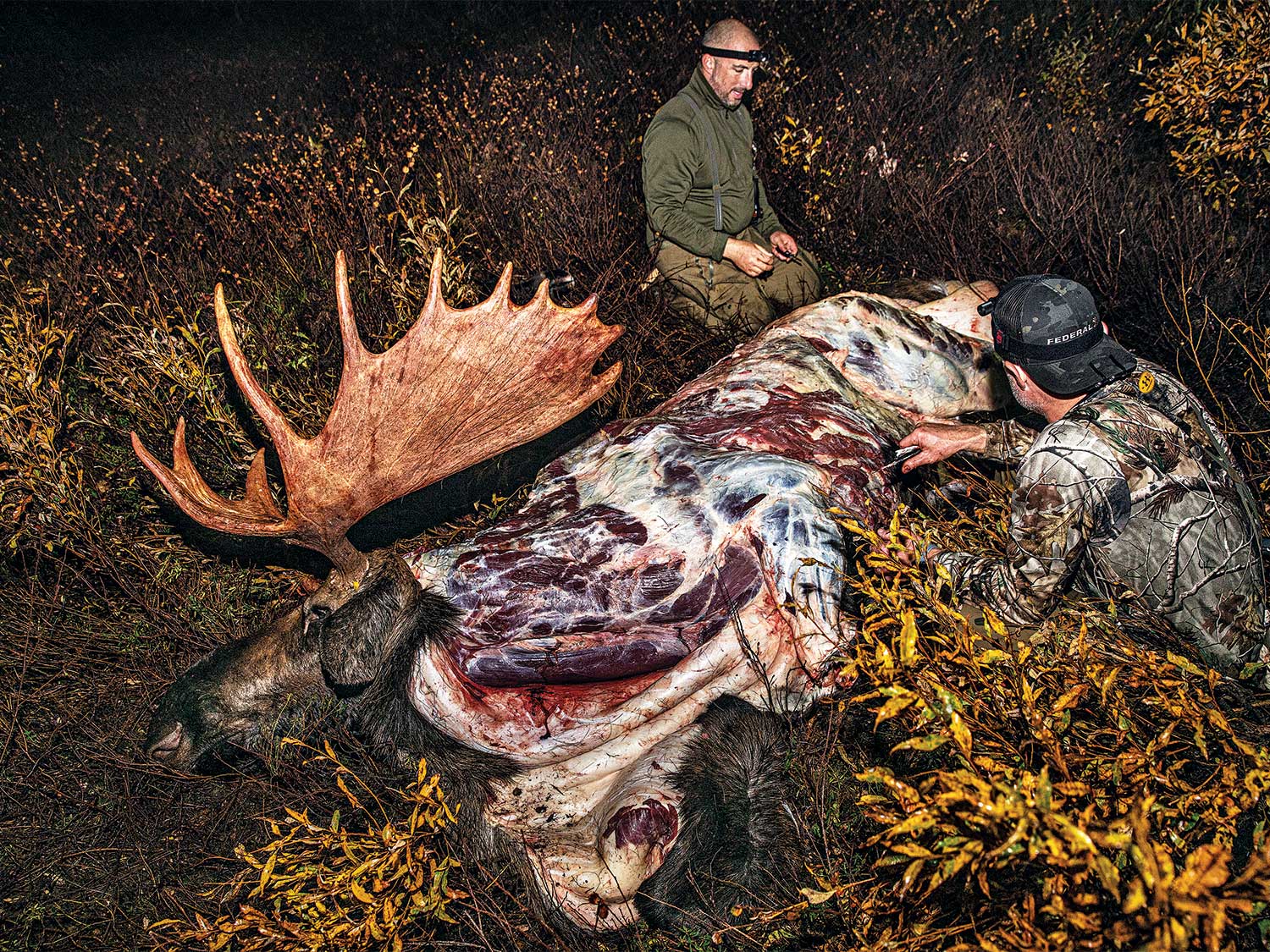
He was 300 yards away, and while he wasn’t walking fast, his every step was bringing him right to me. It was getting late, and the light was failing. Even though I was well-armed with both my .30/06 and a .44 on my hip, I wanted to give the bear his space. So in the spirit of General O.P. Smith, commander of the 1st Marine Division at the Chosin Reservoir, who said, “Retreat, hell! We’re not retreating, we’re just advancing in another direction,” I packed my gear and headed back toward the tent, glancing over my shoulder every few seconds to make sure the griz wasn’t closing the gap.
Before I could make it to camp, I spotted Jason and Tom walking toward me. They were both grinning.
Jason told me that earlier that day, he had called in a bull and gotten a good look at him. He judged it at slightly larger than 50 inches. Many places in Alaska impose a 50-inch minimum on nonresidents, but we happened to be in an any-bull area, so his main concern was just making sure it was a mature bull. The most common way to size up a moose’s rack is to wait for it to face you, then compare the width of the antlers to the distance between its eyes.
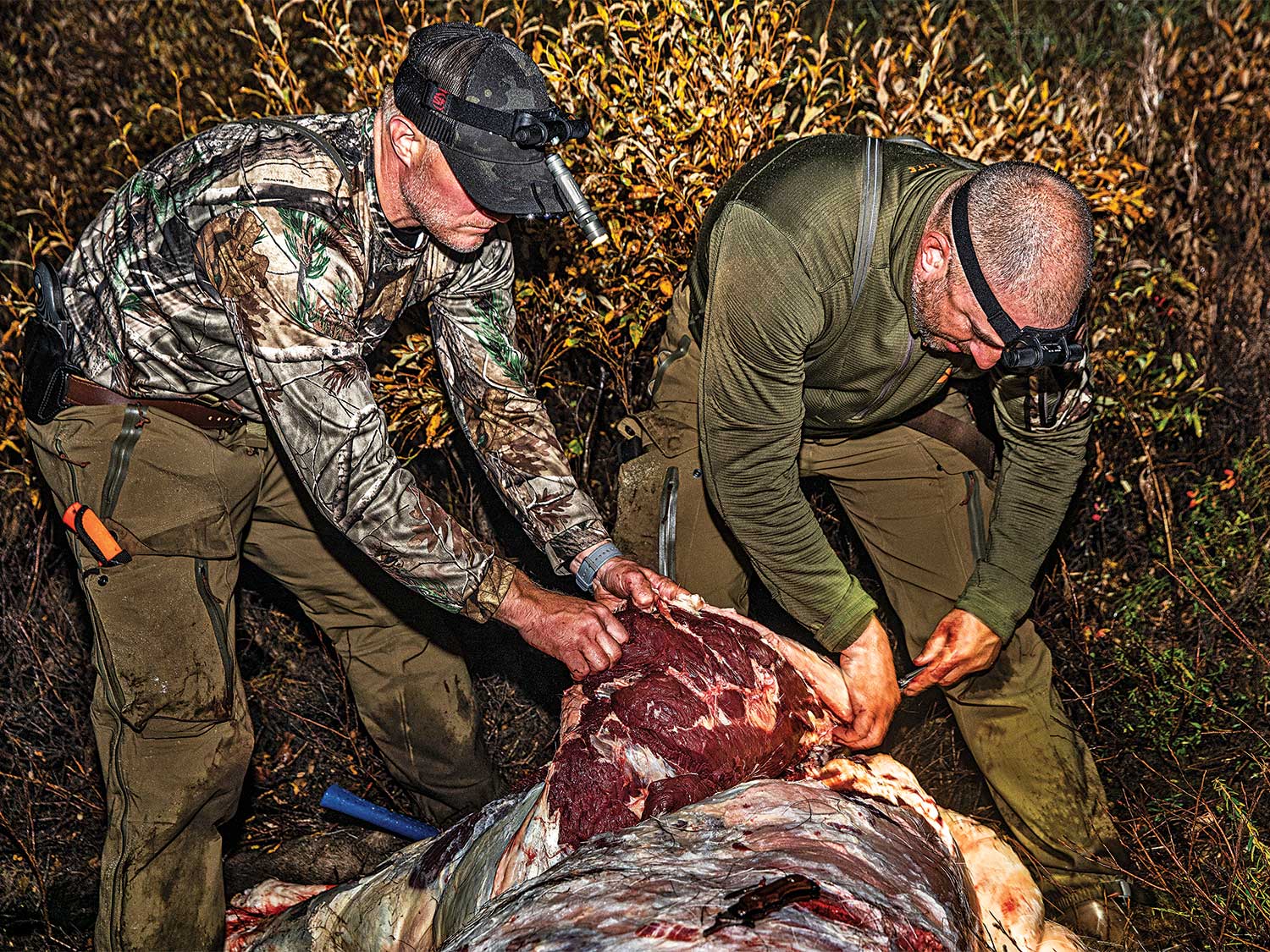
Measured from the outside corners, a bull moose’s eyes are about 10 inches apart. So, if the antlers extend at least two eye-widths off the side of its head, you’re at 50 inches.
During that first encounter, Jason let the bull melt back into the willows. We still had many days to hunt, the rut hadn’t hit its peak, and the promise of a mythical 65-incher kept his finger off the trigger.
But later, when the bull reappeared, again drawn by Jason’s calls, that logic flew out the window. Jason couldn’t resist, and his 160-yard shot took the bull through the shoulder, and it piled up in a shallow ravine in the willows. His smile told me he had no regrets.
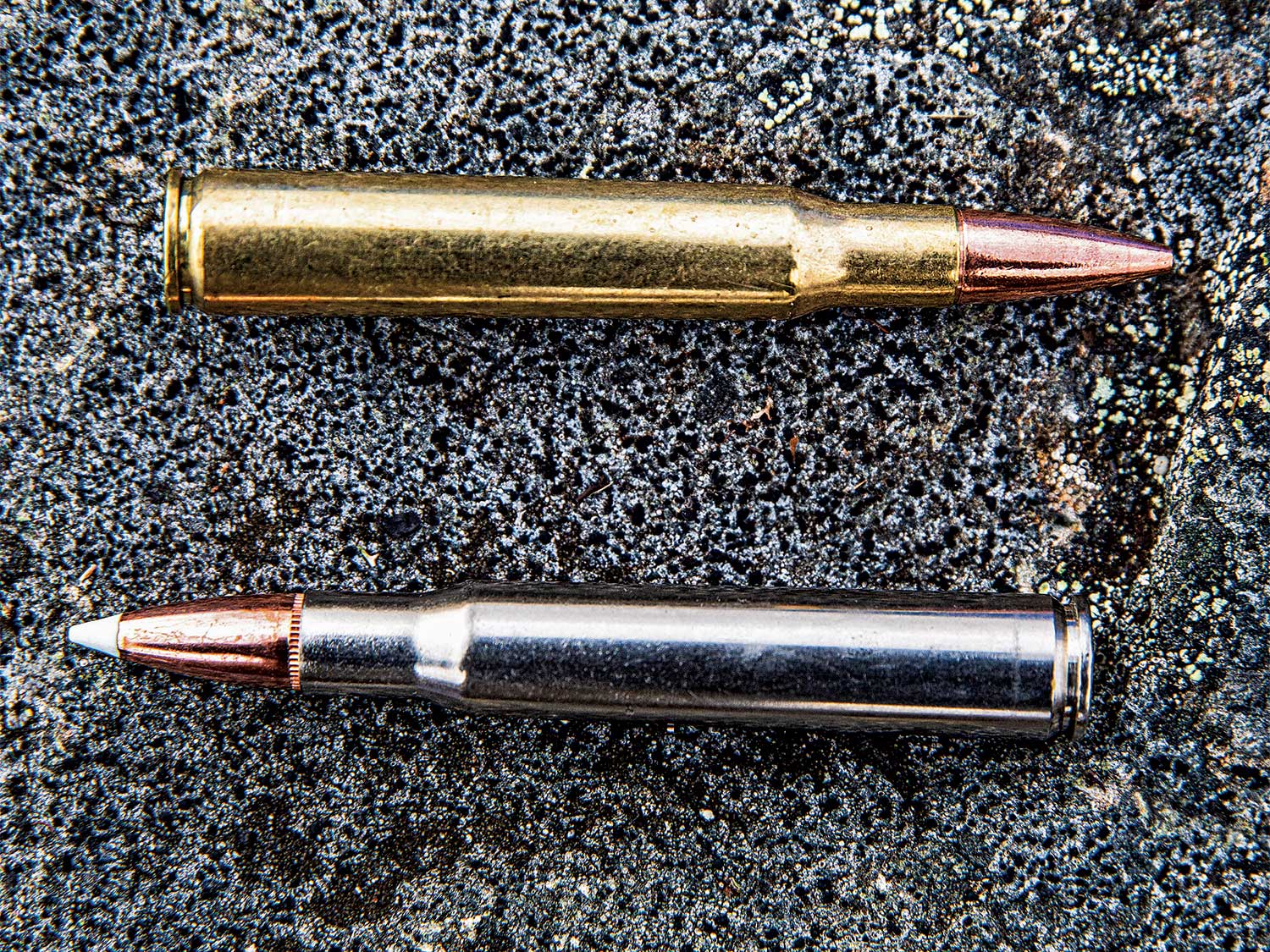
The All-Nighter
The grizzly that had been trailing behind me vanished, but we still had bears on our mind as we put on our headlamps to recover the bull. The terrain down in the willow thickets is featureless in daylight; at night, it’s a maze.
Eventually, we found the moose and got to work. It was a long, wet night. A pea-soup fog rolled in and gave the kill site an otherworldly feel. We managed to get the hide off, the moose quartered, and the first loads—the rear hinds—strapped to our backs. The fog rendered our headlamps nearly useless, blinding us more than lighting our way.
The hike to camp was less than half a mile, but it was all uphill and through the boggy tundra with more than 130 pounds of meat and bone on our backs. By the time we crested the final hill, my legs were shaking, and it was 5 a.m.
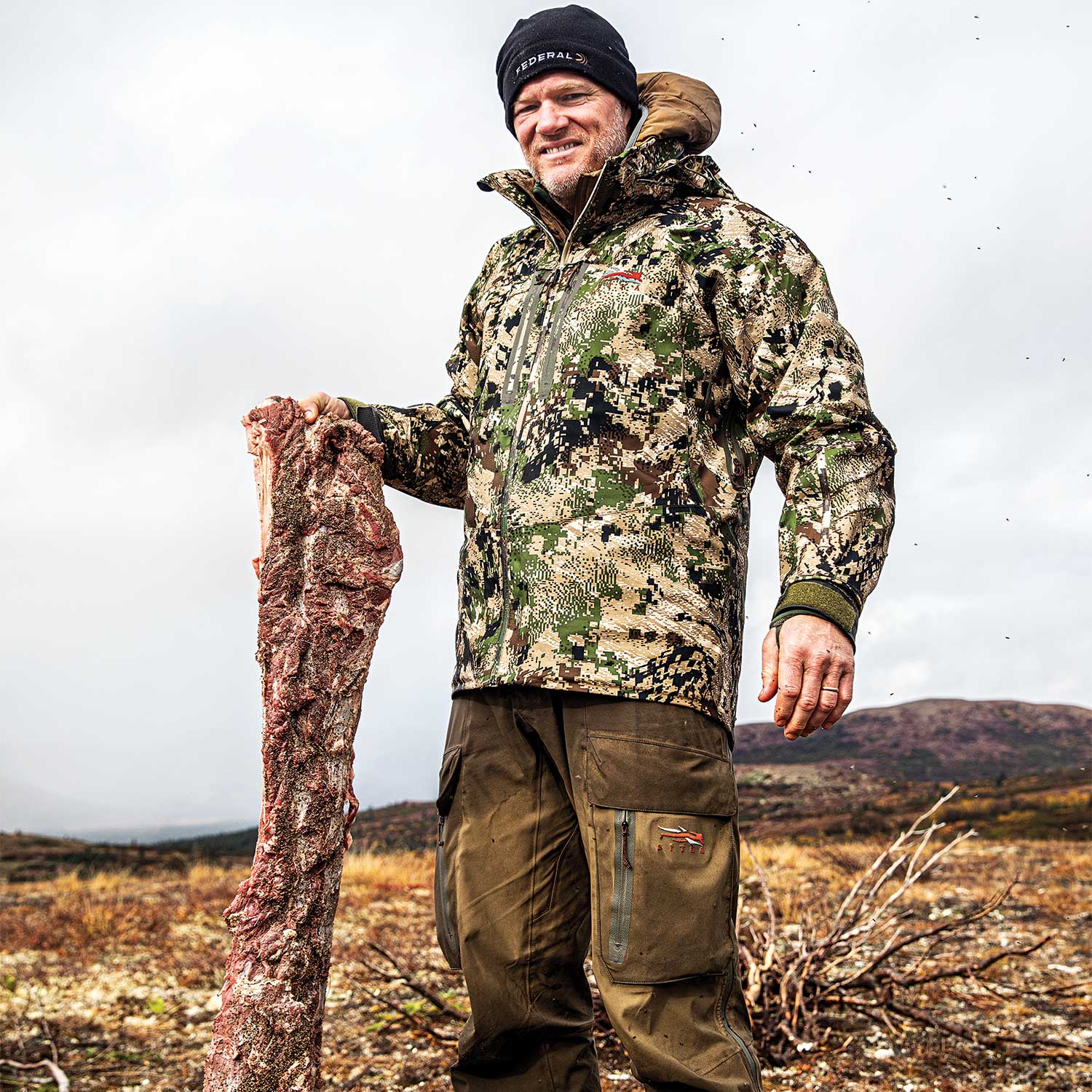
Jason groaned. “That’s some Navy SEAL shit.”
We each took a shot of bourbon and tried to dry off as best as possible before crawling into our sleeping bags, but by this point in the hunt, everything was wet, and our tent smelled like a sweatshop. The next day, we hauled the remaining meat, cape, and antlers back to camp. By then it was raining hard, and our first priority was to protect the venison. Tom took the camp ax and cut down a few small pine trees so we could build a lean-to against the side of the tent to keep the meat dry. We chopped off the boughs to make a bed, and tied sections of the trunks together with paracord to form a frame over which we draped tarps.
After removing the meat from the bags, we dumped a Costco-size container of pepper on it to keep the flies away. We spread the game bags on the branches and put the meat on top of the bags. As the smell of the spiced fresh meat hit my nostrils, I salivated like one of Pavlov’s dogs.
I called Bruce Werba on the sat phone to let him know we had a batch of meat to fly out. But the clouds and fog were keeping all the planes grounded.
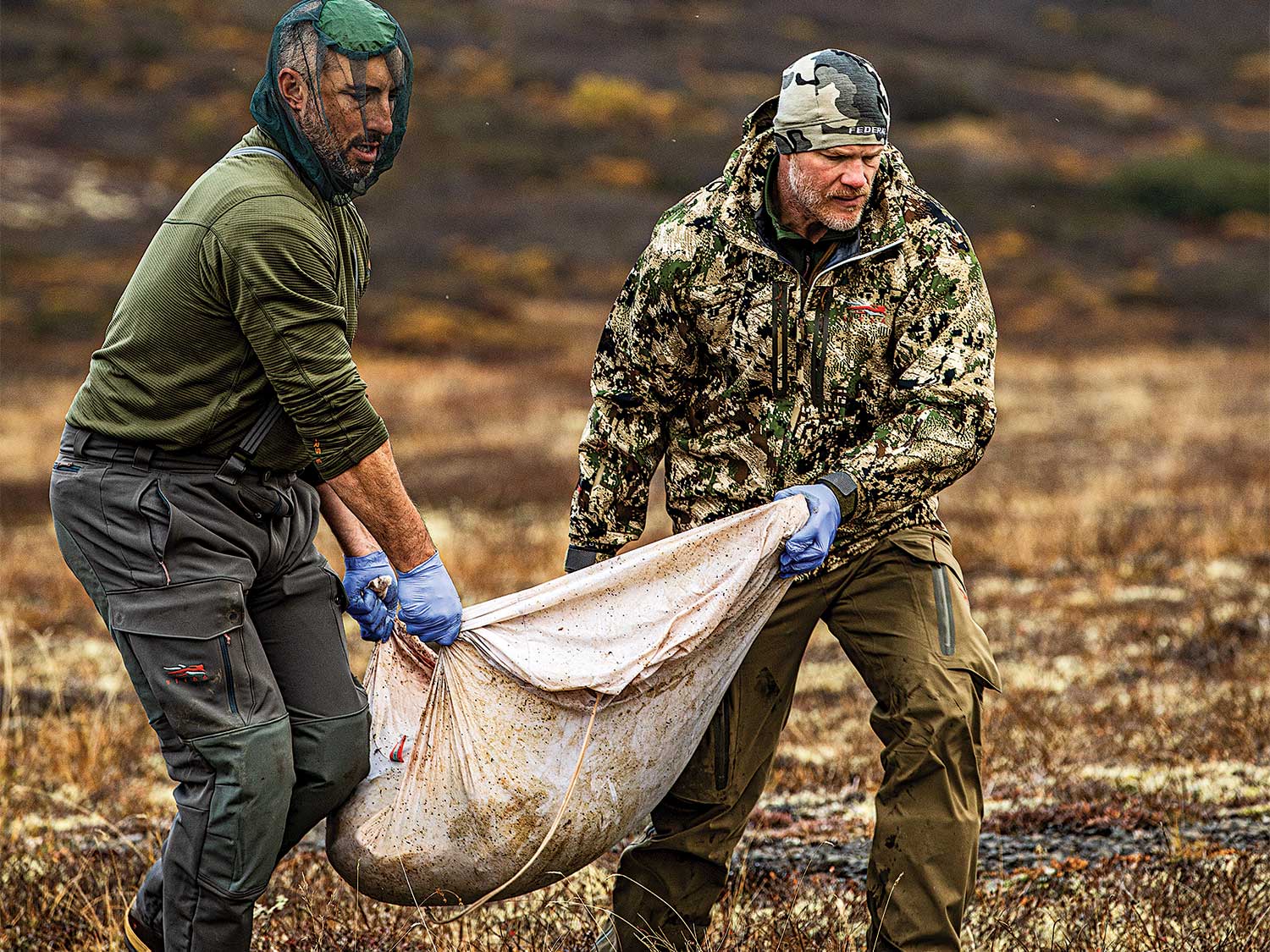
When I asked when the conditions might shift, he said, “Be patient.” When I told him about our scant moose sightings, he repeated that mantra. “Be patient. It can change at any moment.”
Of course, we didn’t have a choice in the matter. The weather was going to do what it would do, and the same with the moose. So we went back to glassing as the rain and the temperature fell.
The very next day, I spotted a good bull high on the mountains behind us to the east. He was feeding up a draw to a saddle. I cow-called and he paused but didn’t turn around or look my way. Eventually, he crested the ridge and vanished.
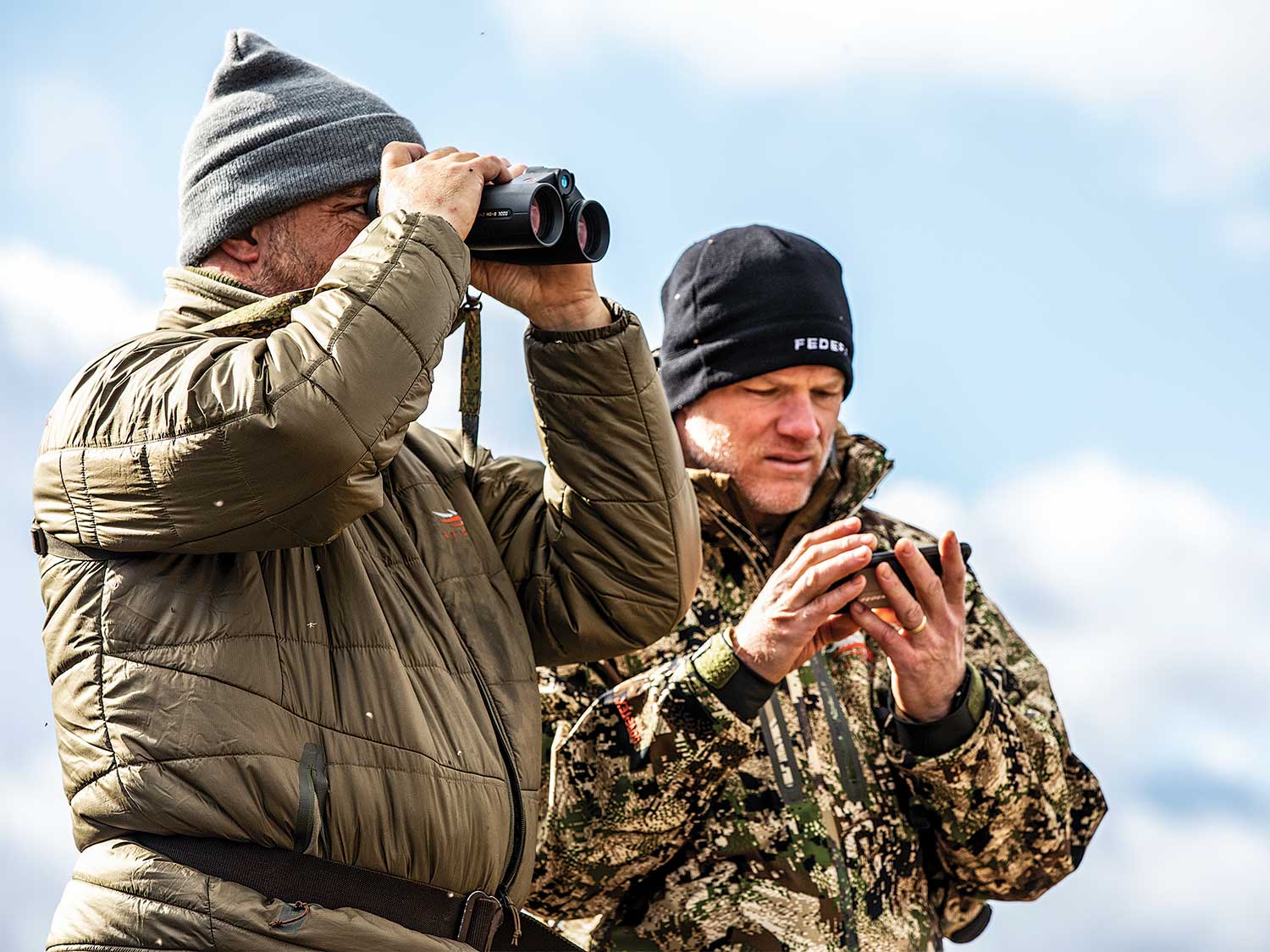
It rained nonstop for the next three days, a cold downpour that finally managed to defeat my Gore-Tex rainwear, making for some truly miserable glassing. Every few hours I’d return to the tent to heat water and make coffee or hot cider to stop the shivering.
At night, our tent offered a fragile haven from the elements, rocking back and forth like a ship in the violent winds that Werba had predicted. The lantern above our heads created a small pocket of warm air at the top of the tent, and we hung our wet gloves and socks around it each night in the hopes they would dry. Much of our conversation turned to how best to stay warm. We stuffed the edges of our sleeping bags with extra clothes, and I started wearing my down jacket as I slept, even though it, too, was wet.
Read Next: A DIY Caribou Hunting Adventure in Alaska
The Final Stretch
On day 10, I saw two more bulls. The first looked to be in the mid-50s and had three brow tines on each side. He was angling toward the river, and I last saw him at 500 yards as he went into the timber. I figured he’d show again later so I could get a better look at his antlers, but I was wrong—he was gone for good.
At the end of the day, I called in a bull in the low 50s. It had gotten foggy again, so we didn’t have much visibility, but I watched him come my way through the willows as he tipped his rack from one side to the other. He walked right below my perch, almost within bow shot.
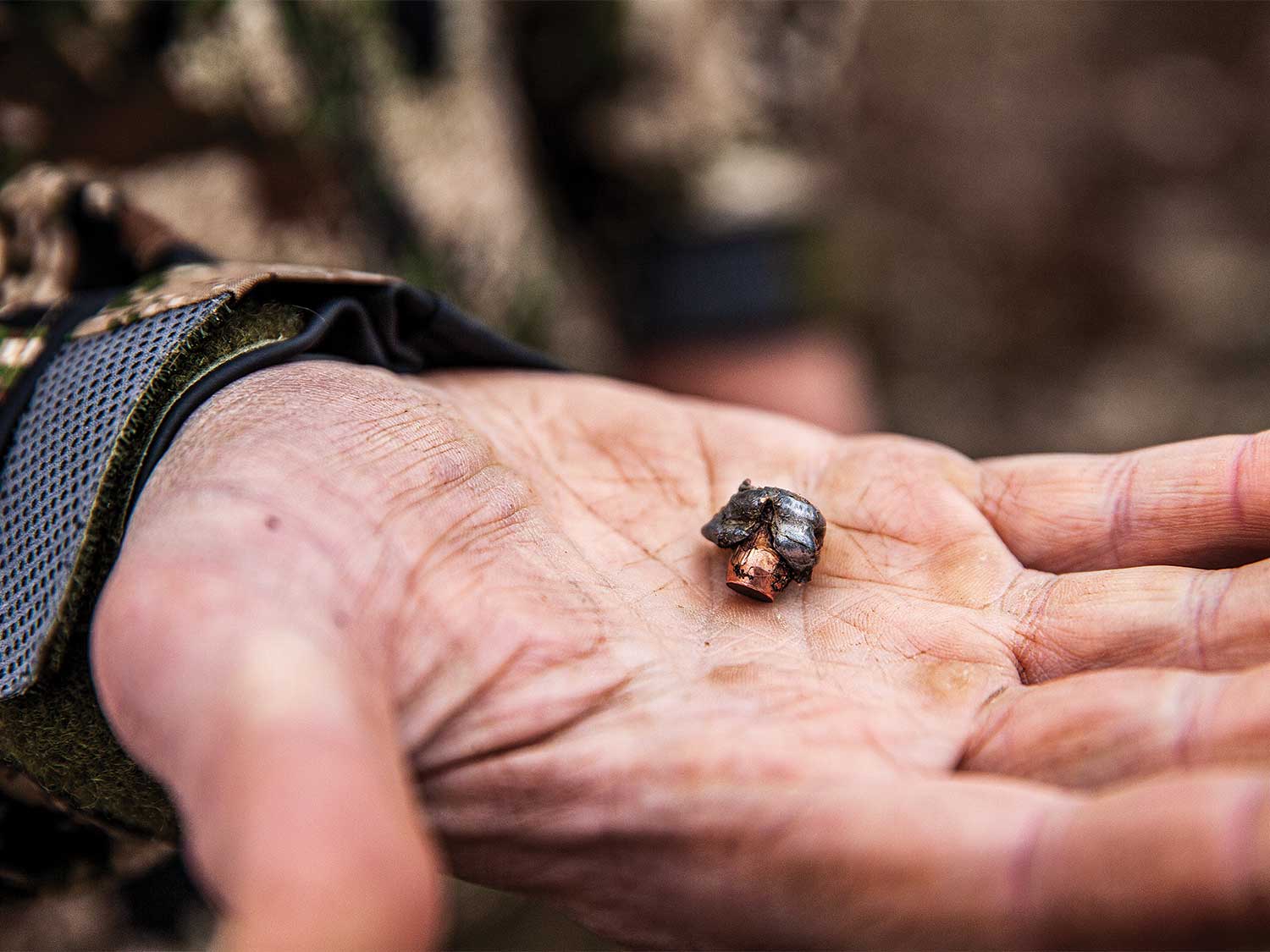
That night, another bear came into camp and dragged Jason’s rack away. We found it 50 yards downhill the next morning. A couple of the points on one paddle had been chewed, and we could see where the bear had scraped bits of meat off the skull. Fortunately, the bear hadn’t worked up the courage to raid our stash of meat under the tarp’s lean-to. He had, however, left an impressive pile of brilliant purple scat next to the tent that, in my addled state, looked like the filling for a delicious blueberry cobbler.
The fog that morning was the thickest it had been. We couldn’t see more than a hundred yards in any direction. But this was the last full day of the hunt, so I went to the northern lookout and stared into the mist. Eventually, the clouds lifted, and I glassed a pair of antlers that appeared like the sails on a man-of-war emerging from a fog bank about 800 yards away.
He was with three other moose: a cow, her calf, and a spindly-horned young bull. After a closer look, I realized he was the smaller bull that we’d already called in several times. There was no calling him today, however: His intentions regarding the cow were unmistakable. He separated her from the calf like a cutting horse. She tried to get back to her calf a dozen times, but he was faster and stronger and herded her off into the willows as the younger bull and the calf watched.
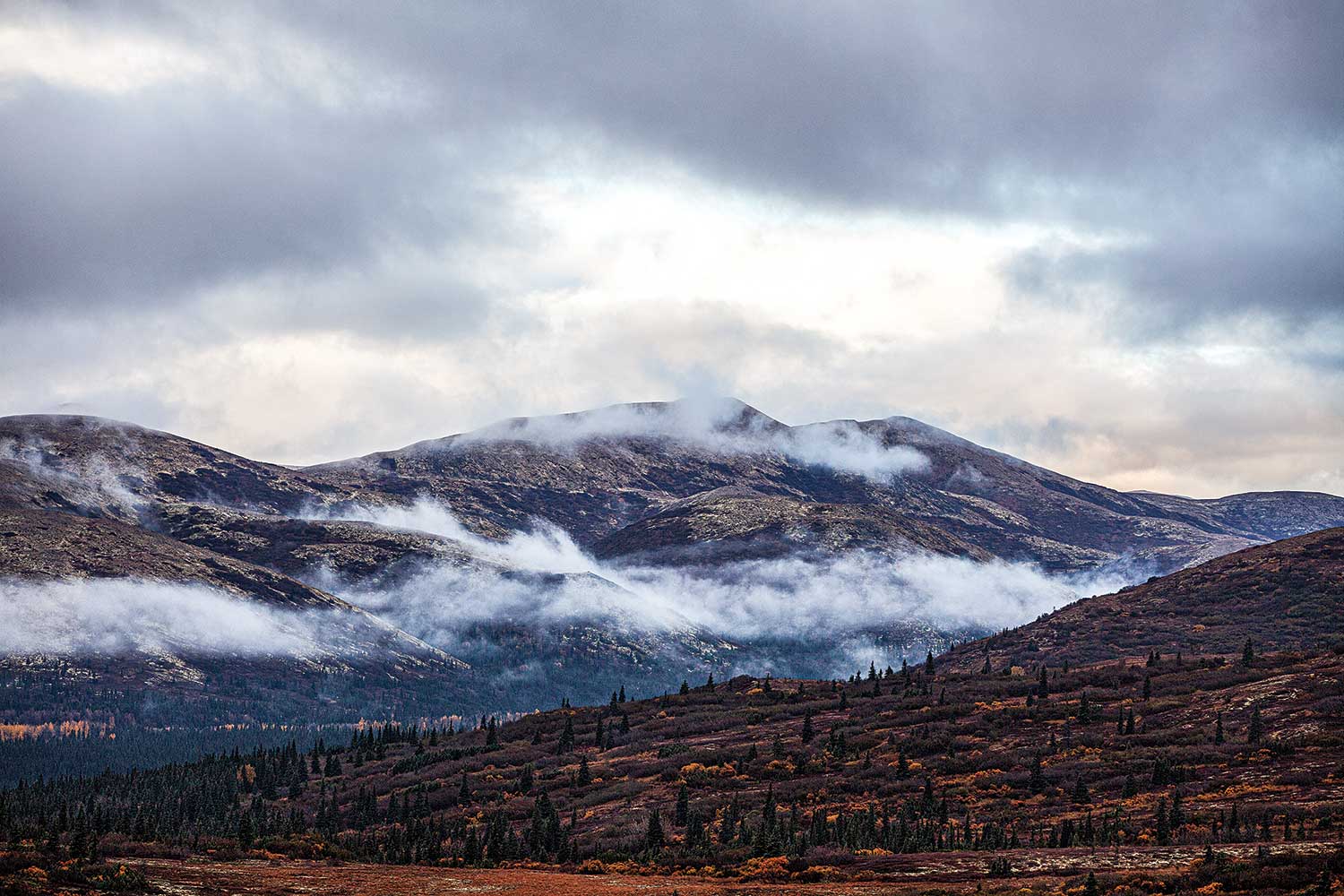
And that was the last moose of the trip.
That night we polished off the bourbon and ate the final bags of Mountain House lasagna, which we had saved for the occasion. I got Werba on the sat phone the next morning. The good news was the weather had cleared and the Super Cubs could take off from Holy Cross to collect us. More good news came in that his self-guided hunters who had been on the river had done well. One shot a 68-inch bull, and another had dropped a 74-incher.
Werba said he was sorry the big boys hadn’t worked their way up higher, and that none of the mountain hunters had shot toads. The weather had been too warm to get the huge bulls moving, and that was that. Whenever your heart is set on a trophy animal, leaving with an unpunched tag is always a possibility. Truth is, I didn’t mind. Jason got a terrific bull, we’d had the great adventure we came for, and I knew at some point I’d return to the Lower Yukon to try again.
After I hung up with Werba, the three of us pulled the 44 stakes from the ground, packed up, and looked to the sky, waiting to hear the drone of motors of the airplanes that would take us home.
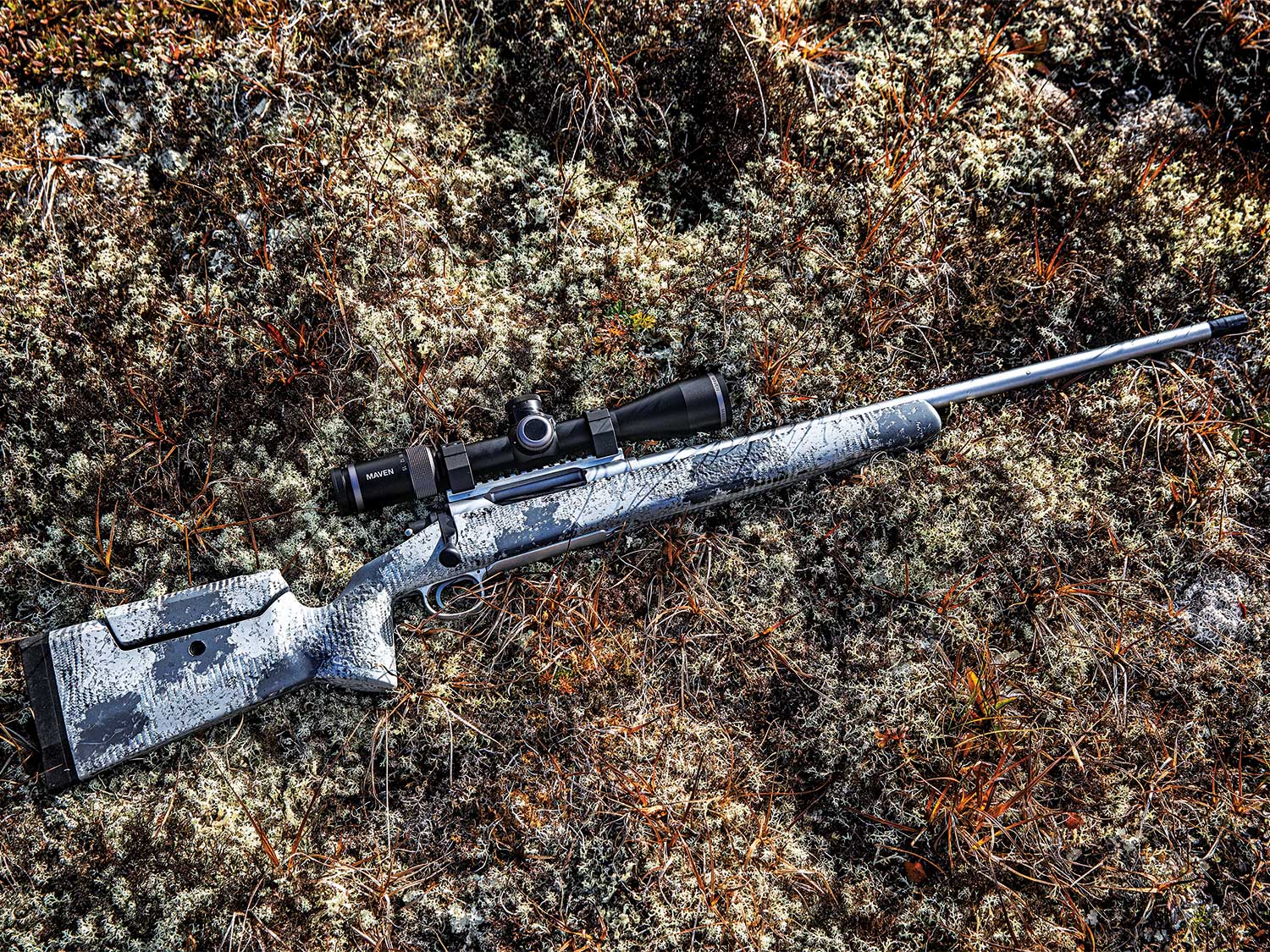
Moose are big animals, but they aren’t especially difficult to bring down. Even moderate cartridges work well on them. In Sweden and Canada, more moose have been killed with the 6.5×55 Swede and the .303 British than anything else, and neither are punishing to shoot. As always, shot placement and bullet construction are the key factors.
On this hunt, Jason and I were both carrying .30/06s. My rifle (above) was built for the elements. I used a stainless Shilen DGR action and Shilen barrel with a Manner’s EH-1A stock and topped it with a 2.5–15×44 Maven RS.1. The rig handled the cold and wet without any problems.
One reason I went with the .30/06 was to try out some of Federal’s new loads. After several years’ hiatus, Federal is working with bullet-makers beyond the Vista Outdoor family of brands. (Vista is Federal’s parent company.) So, once again, hunters can get Federal Premium cartridges topped with bullets from Barnes, Nosler, Hornady, Berger, and others. I’m glad these companies have decided to kiss and make up.
I shot the 165-grain Barnes TSX, which, thanks to its monolithic construction, plows deep into whatever you’re shooting, smashing through hide and bones, and retains nearly all of its weight.
Jason used a 180-grain Nosler Accubond, which I think is about the best all-around big-game bullet made. It is accurate, mushrooms beautifully, penetrates well, and does everything a bullet is supposed to. Another benefit of these projectiles is they would work well on grizzlies. Just in case.

